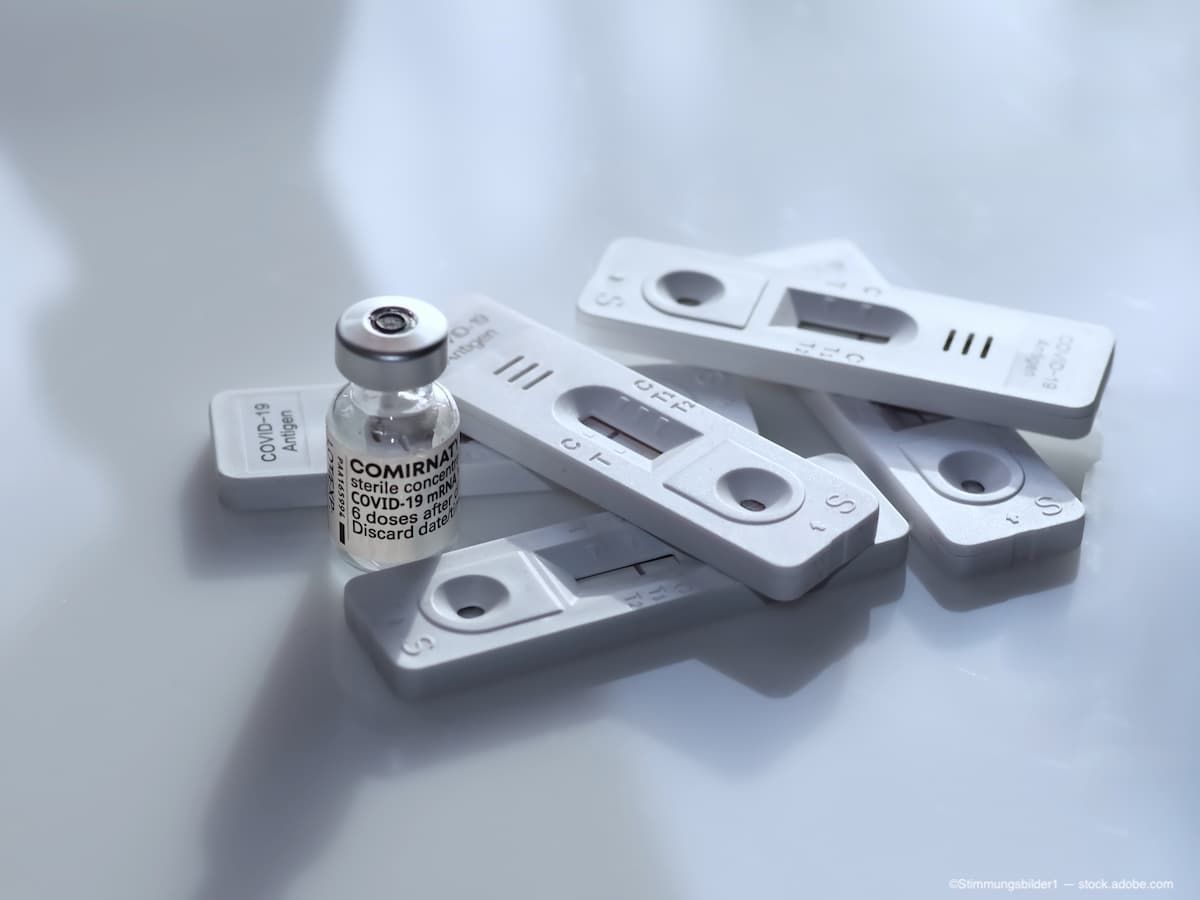News
Article
First case of recurrent multiple evanescent white dot syndrome (MEWDS) shown in woman following both COVID-19 vaccination and subsequent infection
Author(s):
The study from New Zealand was conducted on an otherwise healthy 28-year-old woman.
(Image Credit: AdobeStock/Stimmungsbilder1)

A recent study from New Zealand found a woman diagnosed with multiple evanescent white dot syndrome (MEWDS) twice due to COVID-19 vaccination and subsequent infection.1
MEWDS, first described in 1984, is an idiopathic inflammatory disease of the outer retina that is thought to be a transient, viral-induced autoimmune reaction.2 The pathogenesis is not yet fully understood, but it is associated with flu-like symptoms and has been reported following a number of different vaccinations – Hepatitis A, B, human papillomavirus (HPV), influenza, measles-mumps-rubella, varicella virus, rabies, yellow fever and COVID-19.3
Rachael Niederer, PhD, and Hannah Ng, MBBS, of Auckland Eye conducted the study on a 28-year-old woman who started showing symptoms in her right eye 2 days after receiving the second dose of COVID-19 vaccination. Symptoms included right central scotoma, photopsia and decreased vision.1
According to the study, on examination, best corrected visual acuity was 20/50 in the right eye, and 20/20 in the left eye. The anterior segment was healthy but in the right eye, 1 + anterior vitreous cells, mild optic disc oedema and multiple pale colored lesions scattered near the posterior pole and nasal to the optic disc were observed.1 Fundus autofluorescence showed multiple small, hyper-auto-fluorescent lesions leading to a diagnosis of MEWDS.
Her symptoms resolved without treatment over a 3-month period with a final visual acuity of 20/20 in the affected eye. There were no ocular manifestations following the first or third COVID-19 vaccination.1
One year later the patient showed similar symptoms in the left eye and was once again diagnosed with MEWDS. A week after symptom onset, she tested positive for COVID-19. Further testing was conducted to provide an alternate diagnosis including full blood count, renal function, CRP, HbA1c, serum ACE, HLA-B27 cell surface marker, hepatitis screen and HIV which came back negative. An MRI was also conducted with nothing of note found.1
No hospitalization or treatment was required, and according to the study, symptoms resolved over a 9-month period with a final visual acuity of 20/25 in the affected left eye.
To date there have been 15 cases of MEWDS following COVID-19 vaccintion and at least 3 following COVID-19 infection.4 According to the authors of the study however, this marks the first case of recurrent MEWDS following both COVID-19 vaccination and subsequent infection.
References:
Ng, H.W., Niederer, R.L. Lightning can strike twice: recurrent multiple evanescent white dot syndrome (MEWDS) following both COVID-19 vaccination and subsequent COVID-19 infection. J Ophthal Inflamm Infect 13, 36 (2023). https://doi.org/10.1186/s12348-023-00355-0
Jampol LM, Sieving PA, Pugh D, Fishman GA, Gilbert H (1984) Multiple evanescent white dot syndrome: I. Clinical findings. Arch Ophthalmol 102(5):671–674
Soifer M, Nguyen NV, Leite R, Fernandes J, Kodati S (2022) Recurrent Multiple Evanescent White Dot Syndrome (MEWDS) Following First Dose and Booster of the mRNA-1273 COVID-19 Vaccine: Case Report and Review of Literature. Vaccines 10(11):1776
Baharani A, Reddy RR (2023) Multiple Evanescent White Dot Syndrome Following Adenovirus Vector-Based COVID-19 Vaccine (Covishield). Ocul Immuno
Newsletter
Don’t miss out—get Ophthalmology Times updates on the latest clinical advancements and expert interviews, straight to your inbox.





